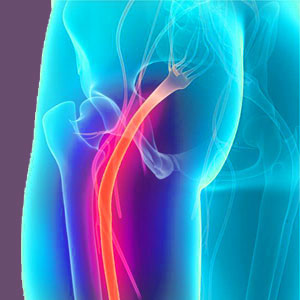
What is your piriformis pain prognosis? Will the pain end organically or will it require treatment? If treatment is necessary, will it prove to be effective or fail and leave you suffering with chronic pain? These are all important questions to consider.
Piriformis pain has been studied intensively by medical and complementary medical caregivers for decades. Doctors know how well most patients will fare when it comes to treatment before the therapy even begins. However, it is amazing that the majority of diagnosed patients really have no clue about their prognosis before beginning care. This essay seeks to rectify this problem.
This patient guide provides factual evidence supporting various prognosis scenarios for piriformis pain. We will explore what causes certain patients to recover and other patients to continue suffering.
Piriformis Pain Prognosis Statistics
About half of all piriformis pain problems will resolve with the passage of time alone. The body will heal itself and pain will diminish and eventually end. However, this is not to say that treatment can not speed this healing or that proper rehabilitation might not prevent recurrences of pain in the future.
The other half of pain problems affecting the piriformis will not generally resolve without some sort of intervention. Not surprisingly, this half of the patient demographic fares worse when it comes to treatment results, as well. What makes these patients more susceptible to ongoing pain, even when professional care is provided?
Prognosis Concerning Diagnosis
The nature of the diagnosis will definitely influence the prognosis for any piriformis pain problem. Conditions involving a definite structural abnormality, such as verified sciatic or pudendal nerve compression due to anatomical irregularity will rarely resolve naturally. Meanwhile, cases involving traumatic injury to the piriformis muscle will typically get better without treatment, although treatment may speed and improve the healing phase.
However, most cases of piriformis pain are not verified to involve structural pathology or known injury. These conditions are the least predictable when it comes to accurately providing a prognosis and this is no surprise to us. Many of these conditions are products of the mindbody interactions and may even be substitute symptoms from some other form of chronic pain or will form substitute symptoms of some new manifestation if actively treated. The more enigmatic the cause of piriformis pain is when it comes to evidential-based diagnostic evaluation, the worse its prognosis becomes statistically.
Piriformis Pain Prognosis Concerning Treatment
Despite there being many therapeutic approaches to piriformis pain treatment, none of the accepted physical methods provides superior curative results to the others for all diagnoses. In fact, even when the diagnosis is rather vague, virtually all forms of treatment fare just about the same in curative potential. This includes surgery, physical therapy, self-managed exercise therapy, chiropractic, massage and Botox.
The therapies that tend to deliver the worst all-around results are drug treatments, which is not surprising, since these pharmaceutical products do nothing to provide a cure and only help mask the symptoms. Over time, the body develops a tolerance and the drugs become far less effective, while the pain often remains. Worse still, the chemicals damage the anatomy, causing real problems with overall health and wellness that might become permanent traumas.
The application of knowledge therapy fares very well in most people with chronic piriformis pain. This proves the mindbody nature of many of these syndromes, as well as highlighting the positive benefits of knowledge therapy for even structural-based pain issues. There is no downside to knowledge therapy and the treatment inherently provides some degree of reward for every patient. Therefore, we tend to suggest knowledge therapy as a first line of care when pain remains past its expected organic healing timeline, instead of the common practice of utilizing much more expensive and dangerous interventions, such as drugs, injections and surgery.
Piriformis Pain > Piriformis Diagnosis > Piriformis Pain Prognosis





